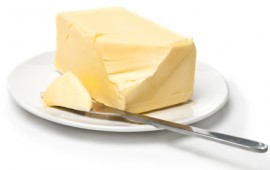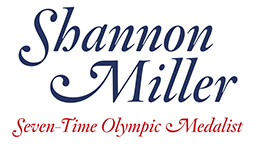Cholesterol: The Good and The Bad
Author: Shannon Miller Lifestyle

An important part of your annual physical is getting a sample of your blood. Your blood can be tested to let your doctor know a lot about your health. One of the common tests determines the cholesterol levels in your blood. It’s good to understand more about cholesterol.
When we think of cholesterol, we usually think of the stuff that causes hardened deposits in arteries and heart attacks.
That is only one kind of cholesterol, and it is important to understand both.
The Good Cholesterol
The good cholesterol is called HDL, or high-density lipoproteins. Think of this one as the “happy” cholesterol. HDL actually functions in the cleaning of the artery system so that it is more efficient.
The Bad Cholesterol
The bad cholesterol is called LDL, or low-density lipoproteins. Think of this one as the “lousy” cholesterol. It is the stuff that gunks up arteries and can cause heart attacks and strokes.
The Other Concern
The other fat associated with cholesterol is the triglyceride count. Triglycerides are the fats that are in the blood.
What Do The Cholesterol Numbers Mean?
It is important to know your numbers for each of the above mentioned cholesterol types, though triglyceride counts are separate from overall cholesterol counts.
- Try to keep your HDL at 60 and above
- Try to keep your LDL at 100 and below
- Try to keep your total cholesterol count below 200
- Try to keep your triglycerides below 150
Causes for High Cholesterol Numbers, and How to Control the Numbers
The causes for cholesterol and high triglycerides can often be genetic. If your family history includes several people with high cholesterol or triglycerides, chances are you will, too. The other cause of high cholesterol and triglycerides is a diet high in saturated fats and low in natural cholesterol-fighters.
To keep the numbers in control, start with diet and exercise. On the exercise front, training the heart to work harder cleanses the system. Good, old fashioned walking is a good start to reduce cholesterol in the blood stream.
Change Your Diet to Reduce Cholesterol
Some foods are amazing for cutting down the cholesterol in the blood stream, by adding fiber that attacks fats and flushes them out of the system, and by increasing the HDL to fight the LDL.
- Beans: eat beans for high fiber content, especially all –natural beans with no additives.
- Drink in moderation. That means ONE drink per day. That one drink increases the HDL in the blood stream.
- Eat fish twice a week. The omega-3 fatty acids in fatty fish, like salmon, lower blood triglycerides.
- Cook or dress with olive oil. Olive oil is also rich in omega-3 fats. The polyphenols strengthen blood vessels.
- Eat nuts. Munch on raw walnuts or almonds for omega-3 fats and fiber.
- Try soybeans: soy protein lowers blood triglycerides. Try edamame in your stir fry or enjoy them as a snack. You can also cook with tofu for soy protein in your dinner.
- Have a carrot: carrots have plenty of soluble fiber to attack cholesterol and triglycerides.
- Eat whole grains: use the actual grains in your cooking or in your breakfast bowls. They are high in fiber, which can save your arteries. Try barley, oats, or quinoa.
- Add flax or chia seed: These amazing little seeds add crunch to a snack while adding tons of omega-3s.
Your Doctor may recommend Medicine
If diet and exercise are not enough to keep your numbers in check, your doctor will recommend and prescribe cholesterol or triglyceride reducing medications. When taking medications, supplement their effectiveness with a healthy diet and daily activity, but always check with your doctor first!
